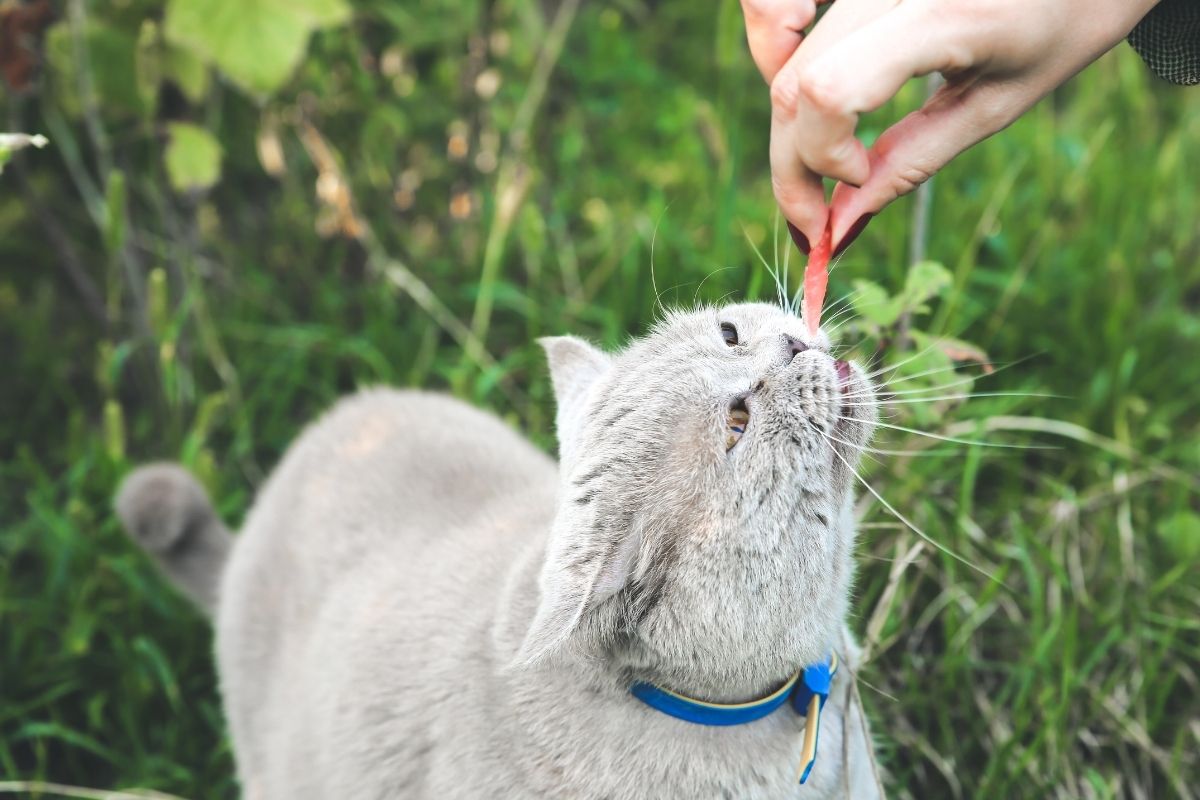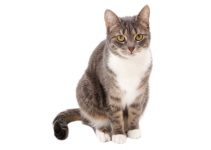Cat food is a safe choice for cats, but sometimes, we all like to give our beloved kitties an extra treat. However, you need to be cautious here.
Some things that humans (or other animals) can eat with no problems at all can be unhealthy, or even downright dangerous for a cat to consume.
The last thing you want is to poison your cat when all you wanted to do is give them something nice to eat, but help is at hand.
Contents
- 1 Things Your Cat Can Eat
- 2 1. Watermelon
- 3 2. Spinach
- 4 3. Eggs
- 5 4. Carrots
- 6 5. Celery
- 7 6. Green Beans
- 8 7. Peaches
- 9 8. Bananas
- 10 9. Rice
- 11 10. Cheese
- 12 11. Lettuce
- 13 12. Chicken
- 14 13. Oatmeal
- 15 14. Prosciutto
- 16 15. Tofu
- 17 16. Pineapple
- 18 17. Olives
- 19 18. Salmon
- 20 19. Bread
- 21 Final Thoughts
- 22 Learn More
Things Your Cat Can Eat
In this article, we’ll go through a list of several things that it’s totally safe for cats to eat, so you can have fun feeding your cat without worrying about what you’re giving them. Lets learn Things Your Cat Can Eat…
Let’s kick things off with watermelon!
1. Watermelon
Watermelon isn’t a natural part of a cat’s diet, and neither are fruits in general. Nevertheless, they can eat it, as it’s not dangerous to them in itself. However, moderation is key here.
Like other fruits, watermelon is high in sugar, so only give your cat a couple of small pieces as a treat.
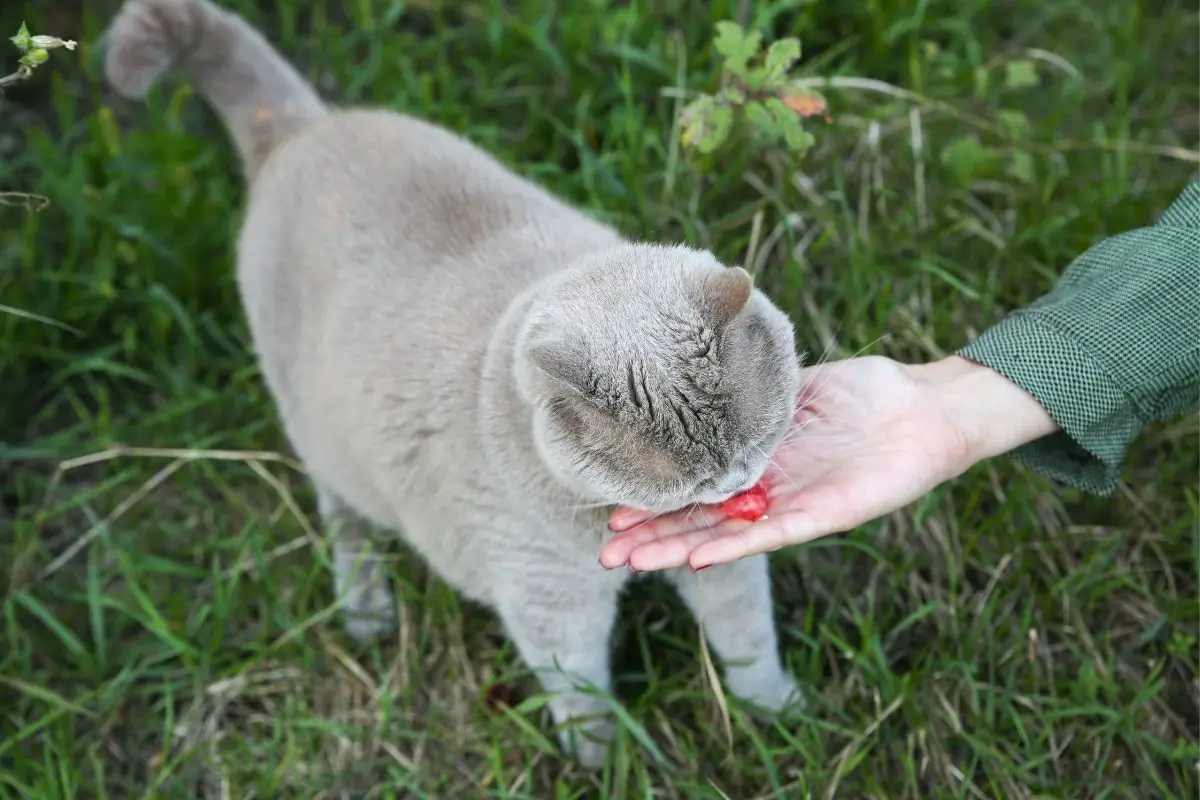
An excess of sugar could cause health problems, and watermelon should never be used as a replacement for your cat’s whole meal.
You should also make sure all the seeds are removed before you give watermelon to your cat, to make sure that it doesn’t choke on them.
2. Spinach
It’s generally perfectly fine to feed spinach to your cat, as it’s very healthy and doesn’t contain anything that would be harmful to a cat.
However, there is one exception to this. If the cat has ever suffered from calcium oxalate bladder stones, giving it spinach will not be safe.
Otherwise, it’s a safe and healthy food, and the abundant vitamins in it will be good for your cat’s health.
3. Eggs
Eggs are a perfectly safe option for cats, and they are actually an ingredient in some commercial cat foods anyway.
You just need to remember to serve them cooked, as raw eggs carry the risk of salmonella.
When eaten in moderation, eggs are a good source of protein and vitamin B, both of which are good for your cat.
4. Carrots
Cats are carnivorous animals, so carrots and other vegetables aren’t a natural part of their diet. Nevertheless, they can still eat them. There are a number of beneficial vitamins in carrots that are good for your cat.
However, they still contain a fair amount of sugar (even if it doesn’t taste like it when you eat them), so be careful only to give them to your cat in small amounts.
It would probably also be safest to cook them so that there’s no choking hazard.
5. Celery
Celery is another vegetable that’s not a natural part of a feline diet, but it can be given to them in small quantities.
Again, moderation is key here, as too much celery can lead to stomach upset. Although it contains a lot of fiber, it’s low in calories, making it a great addition to any cat’s diet.
6. Green Beans
Green beans are another vegetable that’s not usually found in a cat’s diet, but they can eat them. They’re also a good source of nutrients, especially potassium, and they won’t harm your cat in any way.
They’re also relatively easy to prepare, so they’re perfect for busy people who don’t always have time to cook.
7. Peaches
Peaches are another fruit that’s not normally found in a cat’s normal diet, but they can enjoy them.
They’re also quite nutritious, containing lots of vitamins A and C, plus iron and potassium.
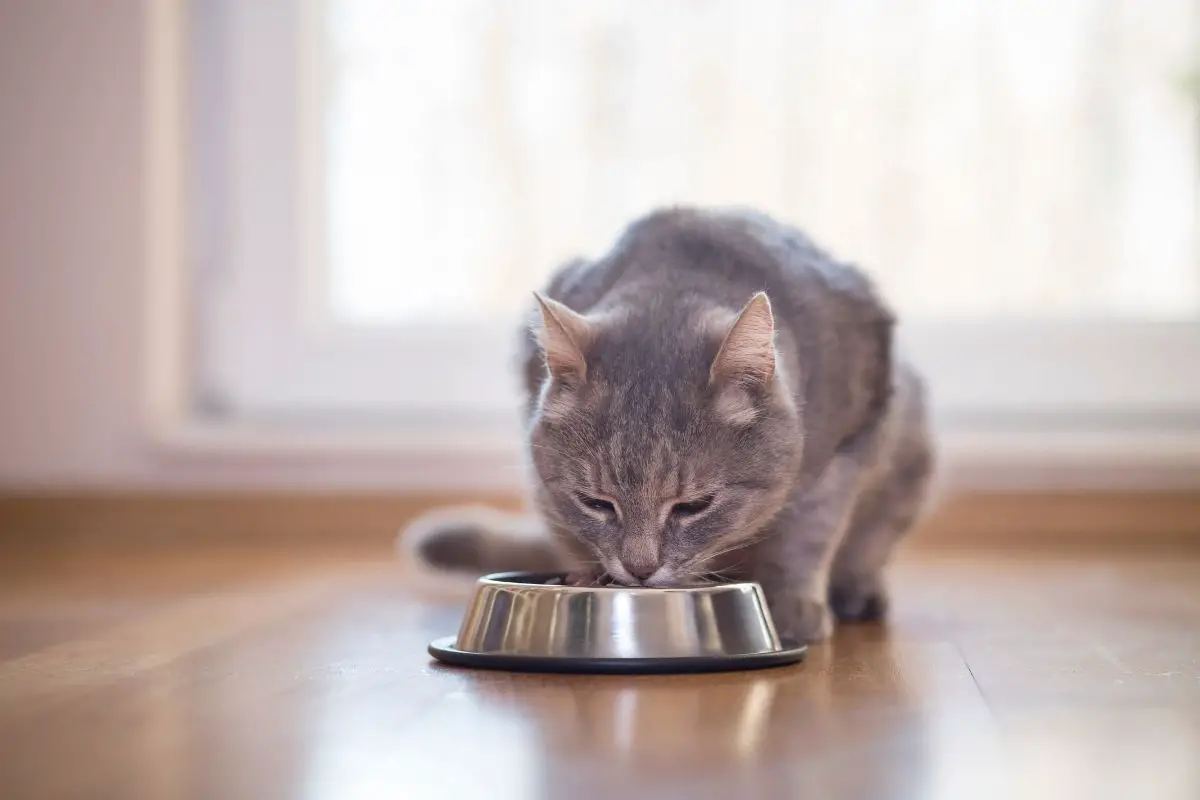
Because they’re fairly sweet, they shouldn’t be overindulged in by your cat, though – just give small pieces to avoid problems.
8. Bananas
Bananas are a common part of many pet owners’ diets, and they’re even sometimes fed to dogs! But bananas aren’t really a natural part of a domestic cat’s diet either, although they can eat them.
Still, you won’t want to give your cat a whole banana, or even half of one. It’s safer to just give it a small slice or two from your banana.
9. Rice
Rice isn’t something most cats naturally eat, but they can enjoy it, as long as you don’t give them too much.
It might even aid their digestion in small amounts, so go ahead. Stick to plain white rice, as spices might upset the cat’s stomach.
10. Cheese
Cheese is something else that’s not part of a cat’s regular diet. Cheese, as a dairy product, contains lactose. Most cats are lactose intolerant, meaning that they can’t digest lactose properly.
Nevertheless, small portions of cheese are likely to be okay. When we say small, we mean small – around the size of a die should be plenty.
If you do want to give your cat some cheese, it’s best to choose a variety that doesn’t contain too much lactose.
Cheddar, Emmental, and Gruyère are some good options for low lactose cheeses. Definitely avoid things like cottage cheese and mozzarella, as these are high in lactose.
11. Lettuce
This isn’t usually the most popular food among cats, but some of them seem to like it rather a lot. The good news is that it’s a pretty safe snack for them.
There’s nothing in it that’s poisonous or toxic to cats, and the high water content will help to keep them hydrated. It also contains fiber and vitamins, which are also good for them.
12. Chicken
Chicken, of course, is a kind of meat, which means it’s much more up a cat’s alley than most of the other items on this list.
The skin is often fatty, so it’s best to remove that before you feed it to your cat. You should cook it too, just to make sure that salmonella doesn’t become a problem.
Of course, chicken is a common ingredient in commercial cat foods as well.
13. Oatmeal
Oatmeal won’t be to every cat’s taste, but the good news is that if your cat likes it, they can eat it safely. It’s a good source of both energy and vitamin B for them.
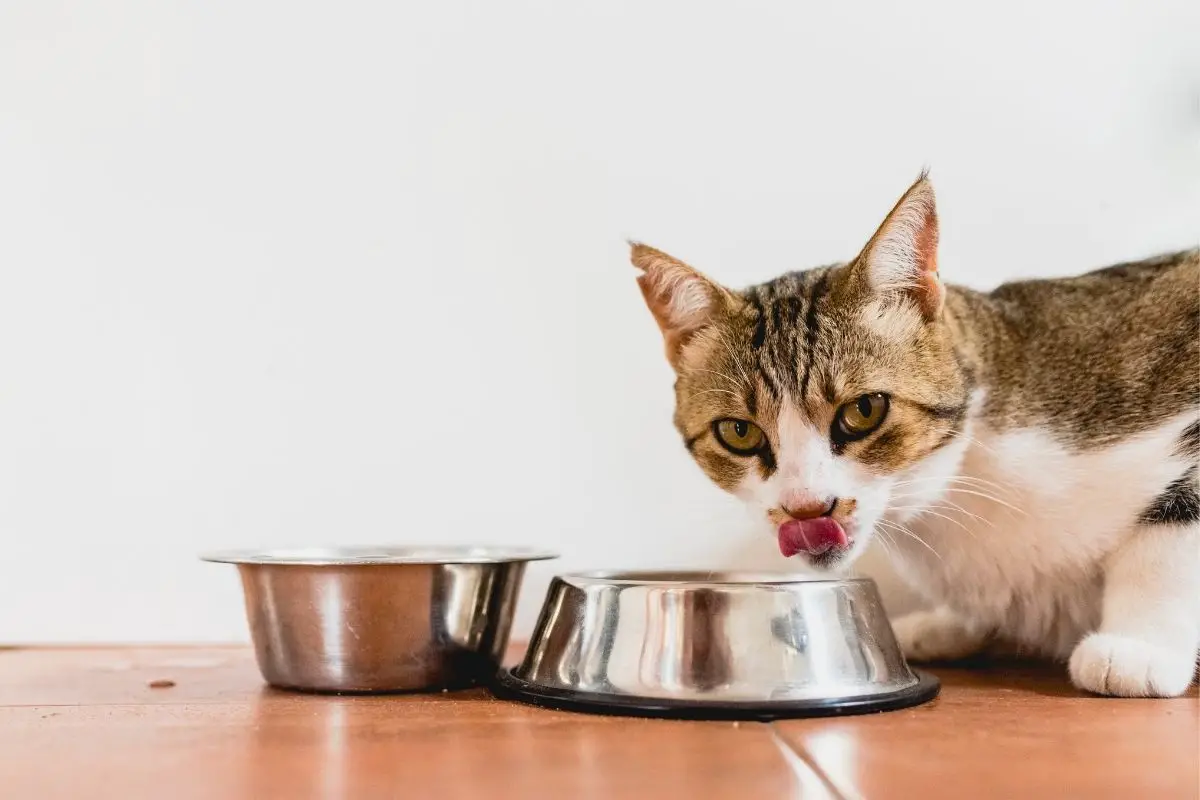
14. Prosciutto
Some of what we said about chicken above also applies to prosciutto – it’s a meat, and cats will probably enjoy it well enough.
However, as you’ll know if you’ve ever eaten any prosciutto, it can be very salty stuff. That means you should strictly limit the amount you let your cat have, and make sure they have sufficient water as well.
15. Tofu
There’s nothing in tofu that would be particularly harmful to cats, but on the other hand, it won’t do much for their nutritional needs either.
It’s also likely to be a fairly acquired taste for most cats as well, though if your cat does happen to like it, there’s no harm in giving them a small piece now and then.
Tofu is usually eaten with some kind of flavorings or seasonings, however, and it’d also be a good idea to check how these will affect your cat as well.
16. Pineapple
Pineapple is another fruit that many cats enjoy eating. It’s high in various vitamins (A, C, and others) and minerals (especially potassium and magnesium), all of which is good for your cat.
However, it’s also high in sugar, which means that you’ll want to limit your cat’s consumption to only a few small pieces now and then.
Fresh pineapple is better than the canned version, as this usually includes syrup, which will contain too much sugar.
17. Olives
While they might not be a part of many commercial cat foods, cats can eat olives very happily. Or, rather, they can eat a small piece of an olive – a whole olive would probably be too much for one cat to eat at one time.
There’s nothing toxic about olives that would be dangerous to cats, so you can see how your cat responds to olives if you like.
18. Salmon
Cats often love to eat fish like salmon, and in fact, if you give them too much of it, they can even become addicted to it and start refusing their regular food.
However, if you give them small amounts occasionally, this shouldn’t be a problem. Salmon contains omega-3 fatty acids, protein, and other nutrients that are very good for your cat, so you can feel good about feeding it to your beloved pet.
19. Bread
While bread doesn’t really offer any health benefits or nutrition to cats, they can still eat it in small amounts.
Keep an eye on your cat if you do this, though – if it seems to disagree with them, don’t give them anymore.
Either way, feeding cats bread is unlikely to cause them any serious harm.
Final Thoughts
So, there you have it, a list of 19 things your cat can eat safely besides eating canned Cat Food.
The thing to remember is that with all of these foods, you’ll only want to give your cat a small amount to ensure that they don’t eat too much. If you do that, they’ll be a welcome treat.
